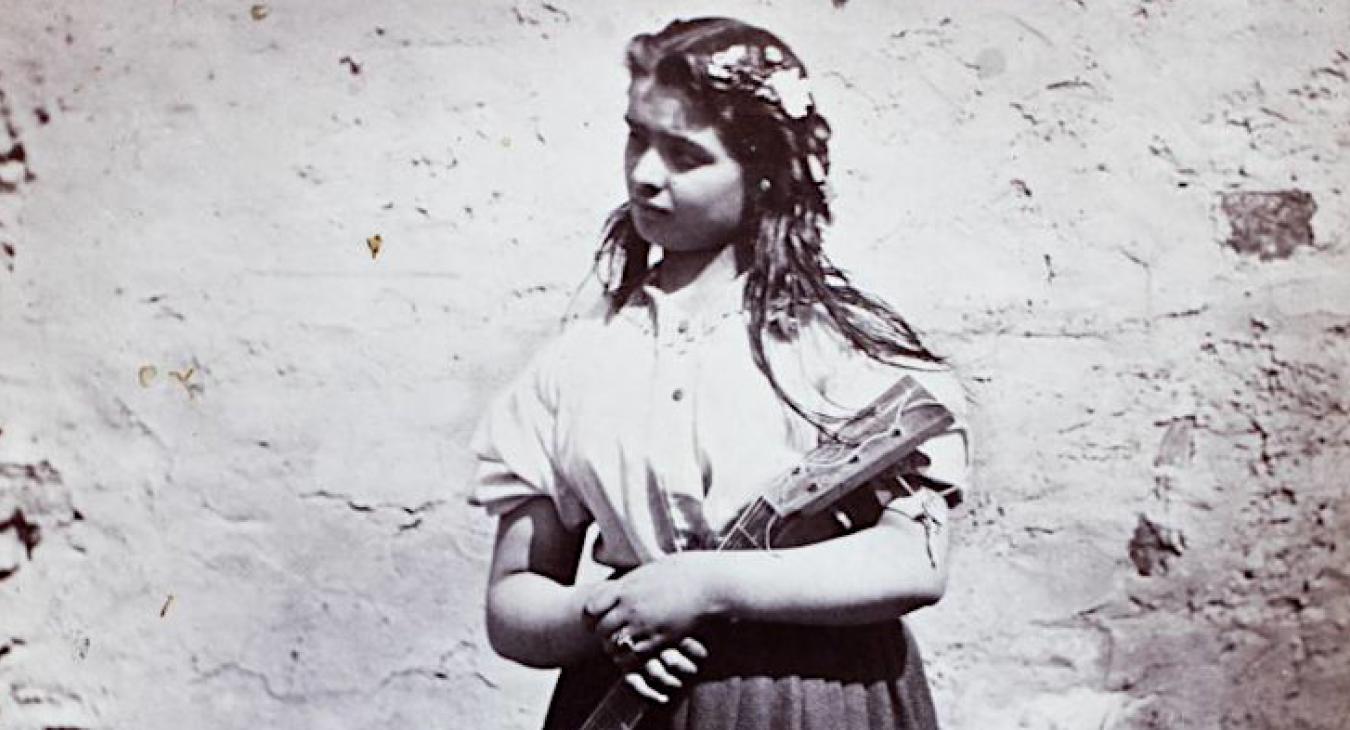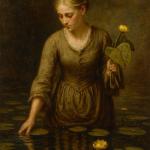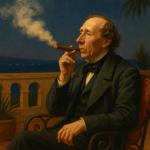"The Mirror of the Sun" pays tribute to a collection of sensuous poems written by the Danish poet Hans Christian Andersen (Odense, Denmark 1805 - 1875) during his travels to Spain in 1862. "The Mirror of the Sun" is a collection of Art Songs that weave together diverse cultural references, creating a fusion of Danish and Spanish cultures. The music in "The Mirror of the Sun" is a unique amalgamation of various genres and styles; the compositions and arrangements blend elements of European late Romanticism and early Flamenco music with modern experimental compositions. The outcome is a sonic universe that bridges different eras, locations, and artistic expressions.
A Multicultural Song
'Soledad Nórdica' is a classical art song * inspired by popular Spanish dances and records of both early flamenco music and Danish folk music. The composition, created by the contemporary Danish composer Poul Udbye Pock-Steen, actually consists of three separate parts::
SEGUIDILLA
Seguidilla manchega is a traditional Spanish dance song from the La Mancha region of Spain. This particular seguidilla, titled "Seguidilla de la Casa de Tócame Roque," is found in a handwritten manuscript by the Spanish musicologist and composer Francisco Asenjo Barbieri dating from the latter half of the 19th century. Whether Barbieri himself composed the melody, or merely documented it, is unknown. The song's lyrics first appeared in a small theatrical piece (sainete) titled "La Casa de Tócame Roque," written by the Spanish poet Ramón de la Cruz more than half a century earlier:
Vale una seguidilla
de las manchegas
por veinticinco pares
de las boleras.Mal fuego queme
la moda que hasta en eso
también se mete
"A seguidilla from La Mancha holds more worth Than twenty-five pairs of bolero dances;
May a cruel fire consume The fashion that even in this intrudes.!"
(the text refers to the new modern bolero dance, which at that time threatened to outcompete the traditional seguidilla).
The Interest in the Roots of Art Music
Francisco Asenjo Barbieri (Madrid, August 3, 1823 – February 19, 1894) was a renowned composer in the Spanish opera genre of Zarzuela. In addition, he was a diligent musicologist who brought back to light the long-forgotten Spanish historical music from the Renaissance and Baroque periods. Another of his achievements was the collection and documentation of vast amounts of Spanish popular and folk music. His interest in the historical traditional roots of art music was shared with many composers around the world, including the Danish composer, organist, and music field researcher Andreas Peter Berggreen (Copenhagen, March 2, 1801 - November 8, 1880).
INTERMEZZO and SOLEDAD NÓRDICA
The seguidilla transitions through an intermezzo for solo clarinet into "Soledad Nórdica," both compositions by Poul Udbye Pock-Steen. The text and rhythm of "Soledad Nórdica" are based on popular flamenco traditions. The composer has sourced his inspiration from an important collection of folk music by another significant Spanish composer and musicologist, Eduardo Ocón Rivas (Málaga, 1834 - 1901). However, the melody also draws inspiration from a range of Danish folk melodies found in Berggreen's extensive compilation 'Folkesange og melodier' from 1842. The melody's beginning with an upward fourth leap and a 'sense' of church tonality is an example typical of Danish folk music from that period**.
In this manner, Spanish and Danish cultures are intertwined in a song that is neither exclusively Spanish nor Danish, but rather a fusion of both. Cultural differences are exhibited and interconnected, aligning perfectly with the tone of Andersen's sensual poems from his journey to Spain in 1862.
The Production of 'Mirror of the Sun'
"Mirror of the Sun" can be thought of as classical world music for a chamber ensemble, featuring primarily lyrics by Hans Christian Andersen and music by various composers. The music is composed and arranged for an uncommon setup of instruments: piano, marimba, romantic guitar, early flamenco guitar, clarinet, gaita (a Spanish folk music instrument), and viola da gamba ***. The songs are performed by two classical singers and one singer employing vocal techniques from world music genres.
Most of the songs are based on a series of quasi-modernist and sensuous poems from Andersen's journey to Spain in 1862. These poems exhibit a number of strong contrasts; South-North, passion-sobriety, sensuality-temperance, youth-old age, nationalism-global outlook, Protestantism-Catholicism, life-death, etc. The poems stand out significantly from the rest of Andersen's poetry, and are, in many ways, ahead of their time, both in form and content. However, the poems did not arouse great enthusiasm in Denmark at the time; they were simply considered too daring.
"Mirror of the Sun" is produced by Ballhaus and performed by the classical chamber ensemble Via Artis Konsort ****. The songs were recorded live in Nyvangskirken in Kalundborg, Denmark.
--------------
* Art Songs refer to a genre of songs that are often written for classically trained singers and accompanied by a piano or a small group of instruments. Art Songs can include poetry set to music and are known for exploring a wide spectrum of human emotions and experiences.
** Yo can follow the score here
**' The viola da gamba, or viol, is an early string instrument that had its heyday during the Renaissance and Baroque periods.
**** More information on Via Artis Konsort at the ensemble web site










